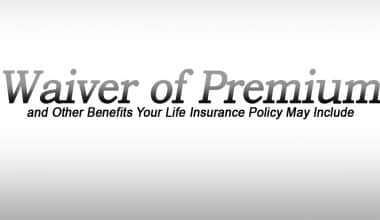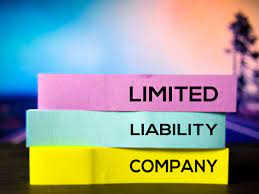A Section 125 plan is a cafeteria plan that provides employees with the legal right to use pre-tax dollars for medical expenses on their tax returns. For example, if an employee pays for their health insurance with pre-tax dollars and then uses those same pre-tax dollars to pay for out-of-pocket medical expenses like prescriptions or doctor visits, they would be able to deduct those amounts from their taxable income.
Section 125 plans are popular because they allow employees to take advantage of tax benefits without paying any taxes on the money used by employers in cafeteria plans. There are many types of qualified plans available today including HSA’s and FSAs but not all of them offer the same tax benefits as Section 125 plans do since they don’t offer refunds or deductions at all when using pre-tax funds instead only offer them after payroll taxes have been deducted from wages earned during an employee’s employment period.#
What is Section 125 Plan
Section 125 Plan is a tax-free benefit plan. It’s also a cafeteria plan, which means that employees can choose their benefits from an array of options. And it’s an FSA (flexible spending account), which means that you set up an account for your employee and then pay into it on their behalf.
Section 125 Plan is a health reimbursement arrangement or HRA—a flexible spending arrangement (FSA). An HRA lets you contribute money toward certain medical expenses incurred by your employees while they are away from work due to illness or injury. You don’t have to pay taxes on these contributions until they’re withdrawn by your employee later on down the road when he/she has been reimbursed for these expenses under another type of insurance plan like COBRA coverage
What Are the Components of a Section 125 Plan?
The components of a Section 125 plan are:
- Medical and dental expenses.
- Dependent care expenses can include child-care costs or other types of assistance with childcare.
- Dependent care reimbursement or dependent care flexible spending account (DCFSA). Health insurance premiums and out-of-pocket medical expenses are not covered by your health plan.
- Qualifying life events, including birth or adoption of a child, loss of other coverage, marriage,e or divorce. Qualifying life events are situations that can trigger the need for benefits under your plan. Examples include: Getting married or divorced Having a baby Starting school Changing jobs
Is Section 125 A Good Idea?
If you are a self-employed person, it is a good idea to use the Section 125 plan. This is because you can set aside up to $125 per month as reimbursement for medical expenses. In addition, the IRS will allow you to deduct any expenses that the number best of your reimbursements from your taxable income.
The following are some examples of things that could qualify as eligible medical care:
- Prescription drugs and other over-the-counter medications
- Eyeglasses or contact lenses (if they’re needed)
Section 125 Plan Document
You will be asked to sign a section 125 plan document, which outlines the terms of your lease and what the end user is responsible for. The document must be signed by both parties before you can move into your new home.
You may also want to include additional documents such as:
- An inspection report that outlines any repairs needed before moving in
- A copy of your credit report
- A copy of your home inspection report A list of the utilities that are included in your rent
- A copy of the lease agreement, which includes details such as the amount you’ll be paying each month How long your lease is valid The rights and responsibilities of both parties
What Is the Difference Between Section 125 and HSA?
Section 125 is a cafeteria plan, which means that you can choose from a variety of employer-sponsored health insurance plans. It’s also flexible because it allows your employer to make changes to the needs of their employees.
Section HSA Plans are tax-free benefit plans and are considered non-taxable under federal law. This means that if you receive benefits through an HSA (Health Savings Account), then those same funds can be deposited into your Section 125 Plan instead of being taken out as part of your other medical expenses—which would be taxable income on top of what Medicare pays out!
What Is IRS Section 125 Cafeteria Plan?
If you’re an employer, then there’s a good chance that you have employees who need to pay for medical expenses and other costs related to their job. A flexible spending account (FSA) is one way for employers to help employees with this expense.
A Section 125 plan is a tax-free benefit plan that allows employees to use pre-tax dollars on certain medical expenses, dental care, and dependent care costs—among other things. Employees can also use pre-tax dollars in their Section 125 plans when they’re paying off student loans or saving for retirement.
How Does a Cafeteria Plan Affect Taxes?
A cafeteria plan is not subject to payroll taxes and income tax. However, the employer can choose to contribute up to $2,500 per employee in 2017 (this amount was recently increased from $2,400). The amount that’s contributed by your company will be excluded from your taxable income as well.
The biggest benefit of this method is that it allows you to save on taxes while still providing some benefits for employees who qualify for them.
What is the Difference Between a Cafeteria Plan and Section 125 Plan
The main difference between a cafeteria plan and a Section 125 plan is that the former allows employees to choose from a variety of health plans, whereas the latter only has one employer-sponsored health plan.
A cafeteria plan allows employees to pick their plan from a menu of participating health plans. If an employee doesn’t want to pay extra for benefits (like dental or vision coverage), he or she can opt-out at any time.
A Section 125 plan is more restrictive because it offers only one health plan and is usually set up by one employer. Most employers who offer Section 125 plans do so as an incentive for employees who have been with them for over two years.
Is a Cafeteria Plan Worth It?
The cafeteria plan is a good idea for employers, but not necessarily for employees.
The reason why it’s better for employers than for employees is that the cafeteria plan allows you to control your benefits and make them more affordable. It also gives you more flexibility in terms of how much money you can contribute each year, which means that there are no limits on how much money goes into your HSA or 401k account (if one exists). This makes it easier to build up savings while still being able to maintain health care coverage through an HSA or other savings vehicle like an IRA.
Section 125 Plan Example
Section 125 plans are one of the most powerful tools for ensuring property protection in an area at risk of foreclosure. A section 125 plan is a legal contract that allows you to sell your home for more than the amount of your mortgage, and use the proceeds to pay off your loan balance. This can be done through a short sale or deed instead of foreclosure.
The simplest way to understand how this works is to look at an example:
You owe $250,000 on your mortgage, but you’ve lived in your home for seven years. You can’t afford to make payments on your mortgage because they would eat up a large portion of your income each month.
In this case, you can put a clause into your loan contract that says if you’re unable to pay back even half of what you owe within 30 days after filing a notice with the lender or servicer (who sends out notices about foreclosures), then they must accept another offer from someone else who wants to buy the property for more than its current value as determined by an appraisal (which doesn’t need to be completed).
When that happens, the lender will give you an extra two months before converting the loan into a deed instead of foreclosure.
Summary
In the end, you need to make your own decision about whether a Section 125 plan is right for you and your family. The best way to do that is by talking to a professional who understands both HSA and cafeteria plans. We can help with all of your questions about this complicated topic!
FAQs On Section 125 Plan
Whats included in section 125 plan
Typically, a Section 125 plan allows employees to pay for health insurance premiums with pretax dollars (medical, dental, vision). Additional choices include health savings accounts, retirement investments, additional life or disability insurance, and various medical or dependent care costs.
Is Section 125 A Good Idea?
Section 125 plans are a valuable, cost-saving benefit.
What is a major disadvantage of a cafeteria benefit plan?
It usually takes more time to administer and is typically more complex.
References
- www.investopedia.com – About the Section 125 (or Cafeteria) Plan
- livelyme.com – Why a Section 125 Cafeteria Plan is Worth the Work for Employers
- www.meetbreeze.com – Section 125 cafeteria plans: Everything to know in 2023
- PERSONAL FINANCIAL PLAN: Guide To Build Your Financial Plan
- What are Outbound Leads and Do You Need Them?
- TWITCH AFFILIATE PAYOUT: Meaning, Method, And Review
- POST AFFILIATE PRO: Meaning, How It Works, and Review
- INCOME-BASED APARTMENTS: Everything You Need To Know
- DEPRECIATION RECAPTURE: Definition and How To Calculate It






